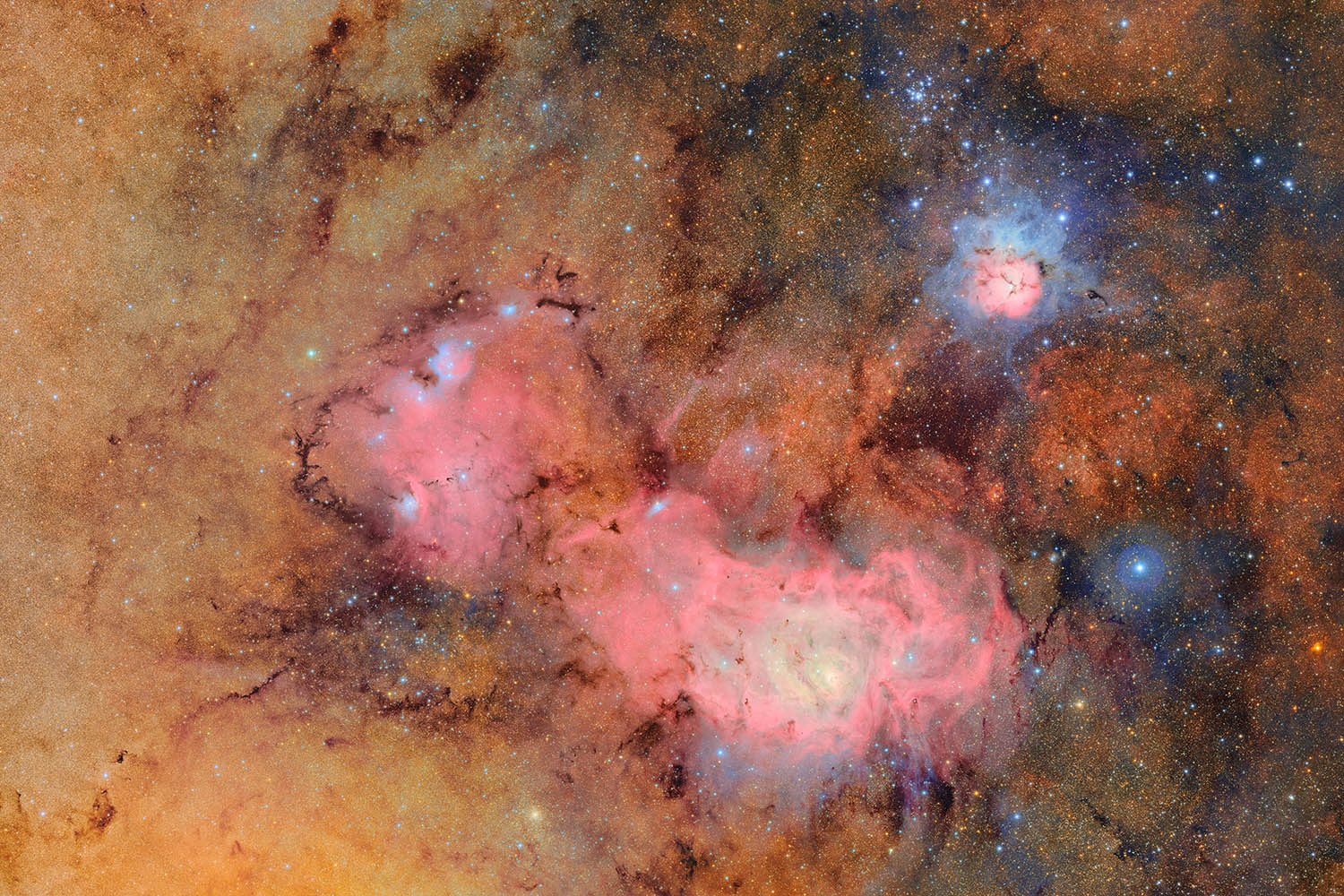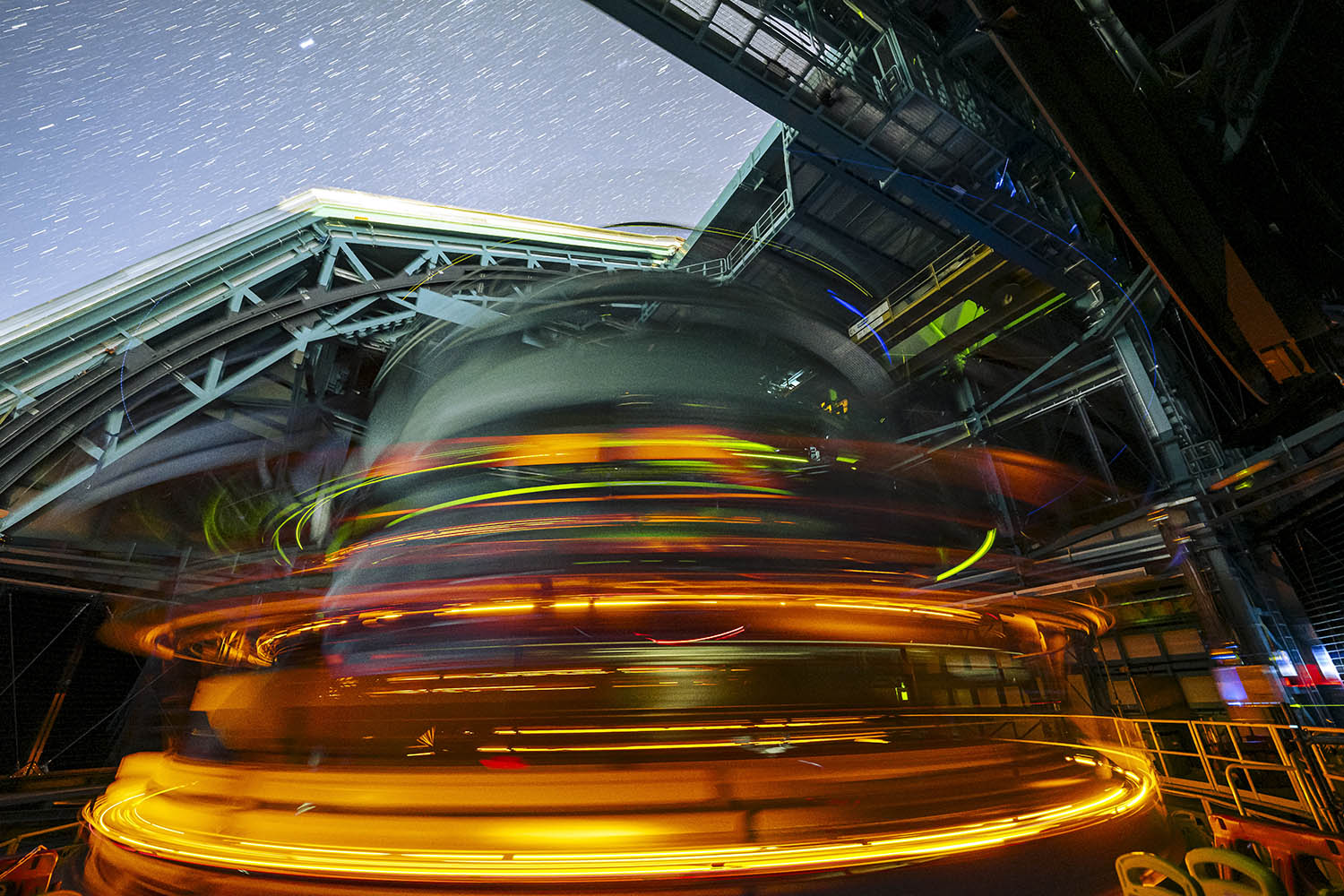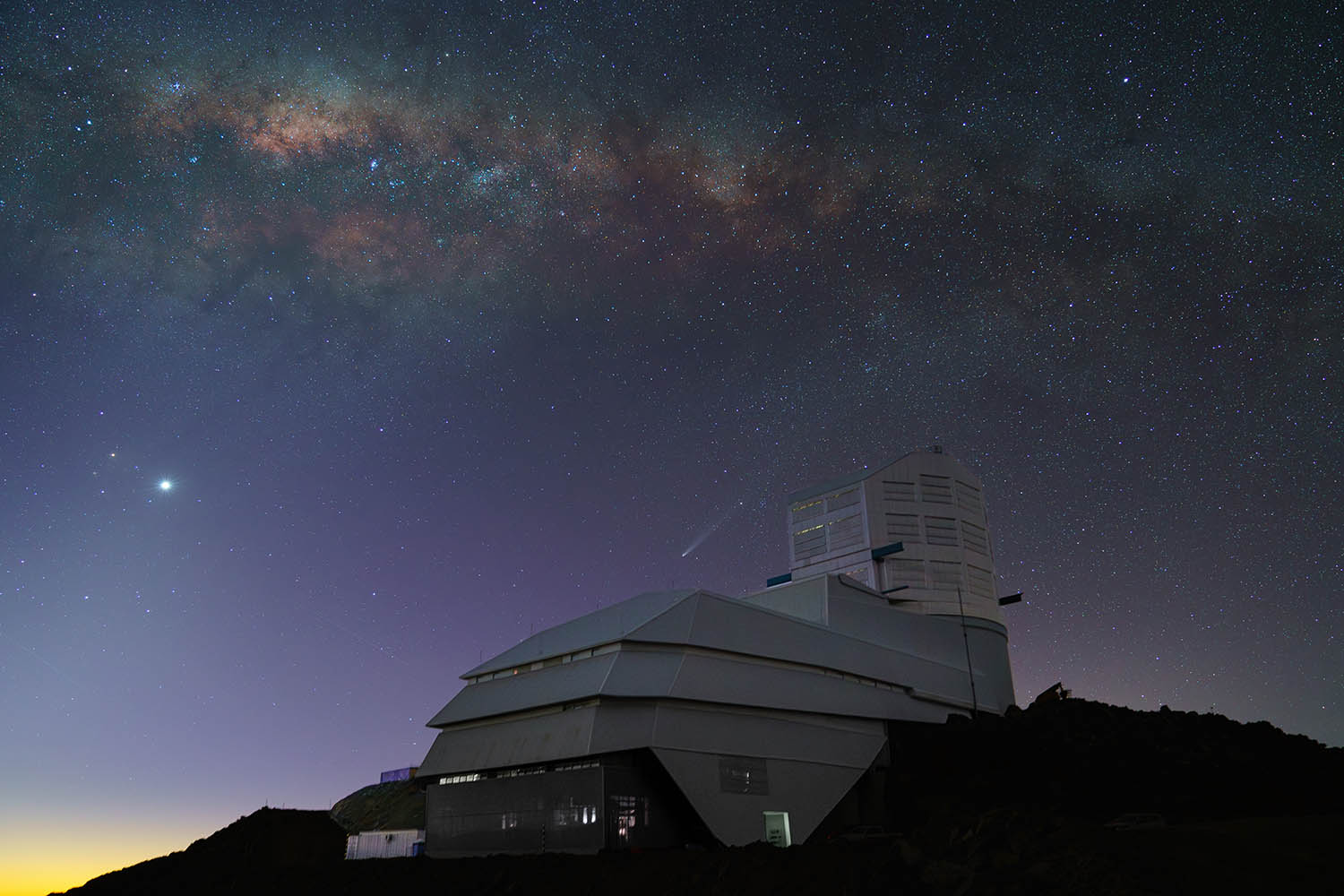On top of a mountain in Chile, a monumental new telescope has just been switched on. The Vera C Rubin Observatory is set to transform huge swathes of astronomy, and scientists are already salivating at the breadth of knowledge on offer, which will include a vast new catalogue of objects in our solar system and answers to some of the biggest questions in the universe beyond.
“It will have an impact over almost all areas of astronomy, from the nearest asteroids up to the expanding universe,” says Bob Mann, a cosmologist at Edinburgh University.
We have all looked at the night sky at one time or another and marvelled at the sheer number of points of light slowly visible to our eyes, from planets to stars. The deeper and closer you look at the sky, the more you can see, stretching farther and farther away from Earth as more remote light reaches your eyes.
Telescopes probe this sky too, using different capabilities to provide different answers. Some, such as the James Webb space telescope that was launched in 2021, are designed to home in on particular objects of interest, such as planets around other stars or intriguing galaxies. Others take much wider views of the night sky, trying to pick out as many objects as possible. That is where the $810m (£595m) Rubin Observatory comes in. Ten years in the making, and named after the late US astronomer Vera Rubin, who revolutionised our knowledge of galaxies and dark matter, it has been designed as a massive sweeper of the night sky.
Inside a 30-metre-wide dome on Cerro Pachón, a mountain in Chile that rises 2,700 metres (8,900ft) above sea level, is a structure the size of a two-storey house called the Simonyi survey telescope that sports an 8.4-metre-wide mirror coated in aluminium. Attached to this telescope is a giant camera, the largest digital camera ever built, with a resolution of 3.2 gigapixels – equivalent to 3,200 megapixels.
Combined, these instruments can provide stunningly detailed snapshots of the universe. On Monday 23 June, astronomers revealed the first images taken by the telescope, construction of which officially began in 2015, unveiling myriad asteroids, nebulae, galaxies and more, stretching millions of light years away from Earth.

A combination of 678 separate images taken by the observatory in just over seven hours
The images were preceded by a testing phase in which the telescope’s instruments were put through their paces before its true work began.
But it is not just the size of this telescope that makes it stand out, but the speed at which it moves. “We cover the sky extremely fast for such a big telescope,” says Robert Lupton, an astrophysicist at Princeton University in New Jersey and the commissioning scientist for the Rubin. Every 30 seconds, giant motors will move the telescope ever so slightly, pointing it to a different section of the night sky about 40 full moons across.
The aim is that, every three or four days, the telescope will capture images of the entire sky visible to it in the southern hemisphere. Then it will do it again, and again and again – for 10 years. “It’s the combination of area and fast coverage that’s interesting,” says Lupton.
The entire telescope weighs 300 metric tonnes – about twice as heavy as some Boeing 747s – so moving it quickly and regularly is no easy feat. The telescope is finely balanced – so much so that you could actually move it by hand – with large magnets, and its motors locking it regularly into position to take precise images of the universe.
“The really scary thing isn’t how fast we move – it’s how fast we stop it,” says Lupton. The telescope must wobble no more than the width of a red blood cell to ensure its images are immaculate enough for scientific study. These capabilities let it create images of the universe in a way no telescope has done before. Taking such regular high-quality views of the sky, astronomers will be able to look for changes every time the telescope returns to the same spot – essentially a giant game of cosmic spot the difference. This will reveal objects that are moving and changing across our solar system and the galaxy, meaning we will very easily be able to spot new asteroids and comets, as well as events across the universe that take place over relatively short periods of time, such as supernovas (exploding stars).
The telescope collects an enormous amount of data through these observations – about 20 terabytes, or 20,000 gigabytes (GB) a night, and eventually 60 petabytes (60 million GB) in total once it completes its 10-year Legacy Survey of Space and Time (LSST). Countries such as the UK will help process this data, with computer clusters at Lancaster University and Edinburgh University helping to sift the sheer volume of objects.
Rubin’s survey may only last 10 years but scientists will be poring through its data for decades
That will give astronomers in the UK – along with the US and France – first dibs on the observations taken by Rubin. “We will have a quarter of the computing workload” to analyse Rubin’s views, says Mann, who is leading the UK’s efforts on the LSST, producing annual data releases. “This is an operation on a scale astronomers haven’t any experience of until now.”
Predictions suggest Rubin will find 37 billion objects in total in the sky. In our solar system, that will include about 4 million new asteroids – more than twice the number known today – and thousands of icy objects beyond Neptune. Those discoveries should come quickly when Rubin formally begins its 10-year survey later this year. “In the first two years, we will get 70% of these objects,” says Meg Schwamb, an astronomer at Queen’s University Belfast.
Rubin’s first images have already revealed more than 2,000 new asteroids. With this new catalogue, astronomers such as Schwamb are hoping to understand more about the overall number of asteroids in the solar system, some of which could also one day pose a danger to Earth. Asteroids are sometimes known to experience bursts of dust, known as active asteroids, which Rubin will help investigate.
“Some of these have been hit in collisions and we’re catching the aftermath,” says Schwamb. Rubin enables us to “see the solar system active in real time”, she says. It may even see objects passing through our solar system that have been ejected from other stars, known as interstellar objects, only two of which have ever been seen before.
The telescope will likewise greatly increase our knowledge of icy objects beyond Neptune by about six times. That may include evidence for a possible additional planet in the solar system – Planet Nine – that is thought to be up to 10 times the mass of Earth and may orbit somewhere in the outer reaches of the sun.
We can see evidence for the gravitational tug of this planet on objects in the outer solar system, causing them to form clusters in peculiar ways, but we are not really sure it is there.

The Rubin telescope has the largest digital camera ever built
Rubin may tell us for certain, either by observing more of this clustering, or actually taking images of the planet itself for the first time. “The planet is expected to be bright enough to be visible from Chile,” says Schwamb. “I hope in the next year we’re going to have an answer to that question.”
Further afield, Rubin is expected to capture images of billions of stars in our galaxy, which will help us create a more detailed map of the Milky Way than ever before. It will also be able to find planets across the galaxy, and spot short-lived transient events such as supernovas. “Rubin is going to have about 10 million supernovae,” says Danielle Leonard, a cosmologist at Newcastle University, compared with just tens of thousands known today. “That just completely changes the game.”
The light from supernovae can help us work out how fast galaxies are moving away from us, a useful tool in measuring the expansion of the universe, which is driven by mysterious dark energy. Astronomers such as Leonard are also interested in what Rubin will tell us about dark matter, the invisible entity that is thought to make up the vast bulk of matter in the universe.
“Only about 5% of the matter and energy in the universe is the stuff we’re used to,” says Leonard. Rubin will capture images of 20 billion galaxies, helping us probe the structure of the universe on an enormous scale that is likely linked to filaments of dark matter that wind across the cosmos.
Mann, meanwhile, hopes to use Rubin to see how galaxies interact across the universe as they crash into each other. “Often these interactions lead to streams of stars getting ripped out of the galaxy, and these features are really faint,” he says. “You need to have really deep exposures to study these, and that’s one of the things we can do with Rubin over a huge area. We can begin to understand how frequently a galaxy experiences an interaction.”
Rubin’s survey may last just 10 years, but the breadth and depth of observations on offer mean astronomers will be poring through its data for decades. “LSST will be the optical survey of our lifetime,” says Mann. “It will be driving astronomy for 30 years.”
All areas of astronomy will benefit once the telescope is operational after more than a decade of waiting. “There’s something for everybody,” says Schwamb. “The adventure is just starting.”
Photographs by Herman Stockebrand, PA, RubinObs
